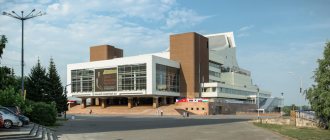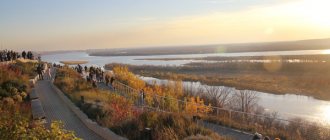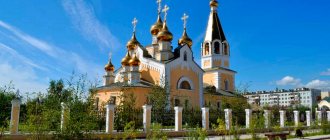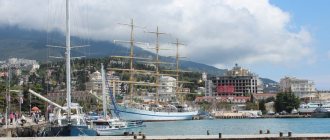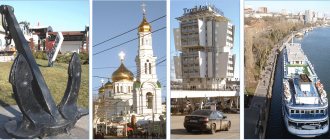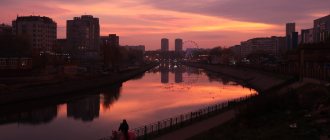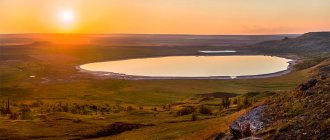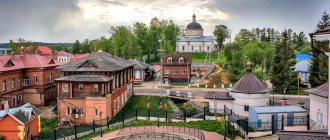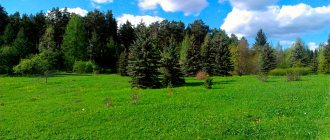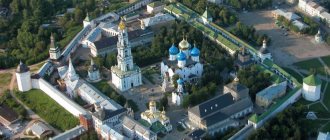Golden Gate
This ancient Russian building stands out strongly against the background of most white-stone buildings in Vladimir. The secret of the Golden Gate is that it simultaneously served as both a defensive site and a triumphal arch. An unprecedented option for the then European architecture. The gate was built in 1164 under Andrei Bogolyubsky, and today it is included in the UNESCO world heritage list. Now there is a museum with a military exhibition dedicated to various stages of history - from the Mongol-Tatar conquest to the Great Patriotic War.
The main attractions of Vladimir: TOP-5
Among all the interesting things that guests of the city have to see, it is difficult to single out anything in particular. However, the main attractions of Vladimir, photos and descriptions of which you will find below, should be seen first.
Golden Gate
- Address: st. Dvoryanskaya, 1A. Transport stop "Golden Gate".
A delightful monument of ancient Russian architecture, included in the UNESCO World Heritage List, was erected in 1164. Then it served protective functions, being an important part of the defensive structures, which consisted of a high rampart and seven travel towers. Later, the Golden Gate, above which the gate temple rises, also became a triumphal arch, in front of the entrance to the quarter inhabited by wealthy merchants. The white stone building, crowned with a gilded onion with a cross, delights with its proportions, eclectic architecture, and elegant decor. Now it houses a functioning temple and a small museum.
Dmitrievsky Cathedral
- Address: Bolshaya Moskovskaya, 60. Transport stop “Cathedral Square”.
The stunning temple, erected in 1197 by order of Prince Vsevolod the Big Nest, is considered a pearl of religious architecture of world significance. The second tier of the façade and drum of the dome of the cathedral, built of white limestone, is covered with exquisite stone carvings. Carefully executed figures, ornaments, heraldic symbols, reliefs depicting scenes of hunting, animals, mythical centaurs and griffins cannot but delight. Inside the cathedral today there is a small museum. Be sure to visit here to admire fragments of beautiful frescoes from the 12th century.
Monument to the 850th anniversary of Vladimir
- Address: Cathedral Square. Transport stop "Cathedral Square".
In August 1958, when festive events were held to mark the 850th anniversary of the city, a monument appeared on Cathedral Square, which became one of the iconic landmarks of the city. On a granite pedestal stands a triangular pyramidal stele, the concave sides of which are covered with bas-reliefs. On three sides at its base there are bronze sculptures of a seated Russian knight, an architect-craftsman, and a worker. Vladimir residents love the monument very much, although sometimes they jokingly call it “Three Lazy People.”
Patriarchal Garden
- Opening hours: on weekdays from 9:00 to 21:00, on weekends from 10:00 to 21:00.
- Ticket price: adult 80 rubles, reduced price 30 rubles, children 20 rubles.
- Address: Transport stop "Spasskaya Street".
The Patriarchal Garden, founded in the mid-16th century, is rightly considered one of the symbols of Vladimir. Its visit is a must on sightseeing tours. Every wedding cortege comes here for the newlyweds to take memorable photographs. This place is unique. A microclimate has been created in the natural depression, allowing representatives of the flora not only to grow in central Russia, but also in more southern regions. Walking through the park, you can admire the well-kept pond, a beautiful fountain on the terrace surrounded by an elegant balustrade, and relax in one of the wonderful gazebos.
Monument to Prince Vladimir and Saint Feodor
- Address: park named after. A.S. Pushkin. Transport stop "Ulitsa Muromskaya".
The monument to Prince Vladimir, whose name the city bears for almost 1000 years, was inaugurated in 2007. According to the plan of sculptor S. Isakov, it should remind not only of the founder of Vladimir, but also of the personalities without whom the history of the city cannot be imagined. The prince is depicted seated on a war horse in armor. In one hand he holds a banner with the face of the Savior. Next to the stirrup on the left side there is a sculpture of St. Theodore, clutching a Bible to his chest and blessing the residents of the city, as well as its guests. The pedestal is decorated with columns and bas-reliefs with episodes from the lives of princes Alexander Nevsky, Andrei Bogolyubsky, Vsevolod Yuryevich, Ilya Muromets, and Saint Princess Olga.
Central Park of Culture and Leisure
The main park of Vladimir is the most popular recreation area for citizens, as well as a site for various city-level events. It's not like typical entertainment areas: quiet and unassuming. This legacy of the Soviet past still evokes nostalgia for many people, although the place has acquired some modern elements. It’s very good here to walk around the fountains with children on weekends, ride bicycles or go on simple rides. One of the main attractions is the large Ferris wheel, which children love so much.
Dmitrievsky Cathedral
This ancient and beautiful cathedral was founded by Vsevolod the Big Nest in 1194 in honor of St. Demetrius of Thessalonica. Its construction lasted three years, after which a temple emerged, which centuries later became part of the UNESCO heritage. The cathedral has experienced many tragic moments in the past: it was repeatedly destroyed by large fires, and a lot of effort and money went into reconstruction. However, even with the advent of Soviet power, they did not destroy it, recognizing it as a historical heritage. At that time, no services were held here, but artists, led by I. Grabar, worked to restore the paintings. Today it is impossible to visit Vladimir without looking at this attraction.
Second day
The most popular option for a 2-day trip to Vladimir is a trip with a visit to the village of Bogolyubovo. The second day can be devoted to a visit to Bogolyubovo and its surroundings. The village is located 20 minutes drive from Vladimir. The settlement was founded in 1158 as the place of residence of Andrei Bogolyubsky. Under the prince, the settlement, despite its small size, turned into one of the important trade and strategic centers of North-Eastern Rus'. In the pre-Mongol period, the city was surrounded by two lines of fortifications: a white stone wall inside and wood-earth fortifications on the outside. Behind the inner walls was the residence of Andrei Bogolyubsky - now you can examine the foundations of his castle. This is the only civil building from the pre-Mongol period that has survived to this day.
Bogolyubsky Monastery
The main attraction of the settlement is the Bogolyubsky Convent of the Nativity of the Virgin . The exact date of foundation of the monastery is unknown. It is not included in the lists of ancient Russian monasteries. The first mentions are found in 1687 - then the monastery became a patriarchal house monastery. The architectural dominant of the monastery, the cathedral in honor of the Bogolyubskaya Icon of the Mother of God , was erected in the middle of the 19th century. More ancient buildings on the territory of the monastery: the Cathedral in honor of the Nativity of the Blessed Virgin Mary (mid-18th century) and the Church of the Annunciation (late 17th century). It is on the territory of the monastery that the remains of Andrei Bogolyubsky’s castle are located. If you have time, it’s worth going down to the holy spring near the monastery pond - the place is very peaceful and picturesque. In spring, during the flowering period, it is worth taking a walk through the Monastery Garden.
Details: Bogolyubsky Convent
Bogolyubsky Monastery Photo: © Juliette17
Church of the Intercession on the Nerl
One of the most beautiful churches in Russia is located 1.5 km from the village of Bogolyubovo. The small white stone temple was erected during the reign of Andrei Bogolyubsky, in the middle of the 12th century. The temple was built in a picturesque place - at the mouth of the Nerl River (the confluence with the Klyazma), a kilometer from the princely palace. The place had an important strategic purpose - here was the river gate to the Vladimir Principality, trade routes crossed. According to legend, the temple was erected in memory of Andrei’s deceased son, Izyaslav.
To build the temple, it was necessary to build an artificial hill (now its height is 3 meters), since the place was located in a floodplain. The foundation of the temple went to a depth of more than 5 meters. The architectural appearance of the temple has survived to this day practically unchanged. This is an almost square temple of a cross-domed type with carved reliefs on the walls. The interior paintings from the 12th century were lost at the end of the 19th century. The church is included in the UNESCO World Heritage List.
Details: Church of the Intercession on the Nerl
Church of the Intercession on the Nerl Photo: © Juliette17
Bogolyubovsky meadow
The historical and landscape complex is located at the confluence of the Nerl and the Klyazma. This is a picturesque expanse of floodplain. The tourist route through the territory of the reserve has a length of 1786 meters and ends 100 meters from the bank of the Klyazma River. It’s nice to relax here after a sightseeing walk: sit under a spreading tree and have a small picnic. There is no equipped recreational infrastructure here.
Bogolyubovsky meadow Photo: © Tatiana Dudarenko
Princess Monastery
In the afternoon, returning to Vladimir, it is worth visiting the monastery, located away from the main attractions. This is the Dormition Princess Monastery , built at the end of the 12th century. The women's monastery was founded by Maria Shvarnovna, the daughter of a Czech prince, who became the wife of Vsevolod the Big Nest. The monastery was originally built as a burial place for the Vladimir princes. The founder, Maria Shvarnovna, spent her last days here; the wife and daughter of Alexander Nevsky were buried.
The main temple of the monastery was built in 1200, but was destroyed by the Tatar-Mongols. In the 16th century, the Assumption Cathedral was rebuilt on an ancient foundation. First of all, the cathedral is notable for the frescoes of the mid-17th century - Moscow masters led by Mark Matveev worked on the wall paintings. The main shrine of the monastery is considered to be the icon of the Blessed Virgin Mary of Bogolyubsk, which dates back to the pre-Mongol period. The monastery is active and visiting is free any day of the week.
Dormition Princess Monastery Photo: © Valentina Pushkareva
Church of the Holy Rosary
If you walk from the Princess Monastery along Gogol Boulevard and cross Theater Square , you will come to one of the most unusual churches in the city. The Catholic Church of the Holy Rosary was built in the red brick neo-Gothic style at the end of the 19th century. Together with the priest's house, the temple creates a unique architectural ensemble. The Catholic parish is active and services are held here. Visiting is free.
Details: Church of the Holy Rosary
Church of the Holy Rosary Photo: © dualia1
You can end the second day with a rest on Teatralnaya Square. Twice per evening in the summer you can watch the light and sound fountain show : at 19:00 and 21:00.
Theater Square Photo: © Oksana Gordeeva
Assumption Cathedral
Without exaggeration, the Assumption Cathedral can be called one of the must-see places for tourists in Vladimir. This temple, built in 1158, is not in vain included in the list of UNESCO World Heritage Sites. The tall white stone building with powerful golden domes is an excellent example of Orthodox church architecture. It is worth noting that the building was rebuilt several times, so its appearance has changed over the centuries. One of the greatest items of interior decoration are the rare frescoes of the master icon painter Andrei Rublev.
Patriarchal Garden
The garden, located in one of the oldest parts of the city, makes an indelible impression on the guests of Vladimir. The huge territory, with an area of almost 4 hectares, once served as the princely court of Prince Andrei Bogolyubsky. Today it is a great place to relax. The garden contains an impressive collection of plants, especially flowering ones. More than a hundred species of fruit trees and more than a hundred types of flowers delight visitors, filling the air with fragrance. Neat stone alleys and colorful flower beds create a stunning landscape that is loved by both tourists and locals.
Vladimir Central
Vladimir Central is one of the most famous prisons in the country, thanks to its immortalization in the songs of Mikhail Krug. In fact, the history of this penitentiary institution turns out to be much deeper and more interesting than the common man knows. The foundation of the prison was laid by Empress Catherine the Great, and for a long time this place served as a transit point. However, with the advent of Soviet power, the central prison became the main Vladimir prison for the most dangerous prisoners. Mostly, all those convicted were political criminals who opposed the Soviet regime.
Mother of God Nativity Monastery
This monastery played a significant role in ancient Russian history. It was built by Vsevolod the Big Nest in 1191, and since then this structure has seen many large-scale upheavals and changes. In addition to the prominent political figures who visited here, the monastery is famous for the fact that it was here that the body of Alexander Nevsky was buried. During the Soviet period, the monastery was used by security officers, which gave it the bad reputation of bloody repressions. Today there is a newly functioning monastery here, which plays an important role in the Russian Orthodox Church system.
Vladimir City Council building
This building can rightfully be called one of the most beautiful Dumas in the country. The building of the Vladimir City Duma was erected in 1906. The architects imitated the old Russian style with numerous patterns and intricate decorations, so the result of their year-long work looks very interesting. It is worth noting that immediately after construction, this building housed the city council, the orphan’s court, and even trade pavilions on the ground floor. The Soviet period turned it into a pioneer palace, and today it houses the regional administration and is recognized as a cultural heritage of the country.
Historical and architectural monuments
In addition to the stunning temples, the city has many other attractions. Among them, we will highlight what you should definitely see in Vladimir.
Former city council building
- Address: st. Bolshaya Moskovskaya, 54. Transport stop “Cathedral Square”.
You cannot pass by this pearl of architecture, whose silhouette resembles a colorful fairy-tale tower, without admiring the skill of the architects. The facades of the building, erected in 1907, are decorated with brick patterns and ornaments. The highlight of the exterior are two hipped domes, one of which is crowned with an intricately shaped weather vane. In the 30s of the last century, a two-story building in the classicist style was added to the mansion, but this did not make it any less magnificent.
Monument to Andrey Rublev
- Address: Cathedral Square. Transport stop "Cathedral Square".
The memory of the great Russian icon painter, whose hands painted the walls and vaults of many ancient churches in Vladimir, was immortalized in the city in 1995. It was then that a monument in honor of Andrei Rublev appeared on Cathedral Square. A bronze sculpture of an artist canonized is placed on a stepped pedestal of white stone. Rublev, overwhelmed with inspiration, holds the icon board in front of him, preparing to add the finishing touches to the created image with a brush clutched in his hand.
Monument to Alexander Nevsky
- Address: st. Bolshaya Moskovskaya, 66. Transport stop “Cathedral Square”.
As you know, the great defender of the Russian land was initially buried in the Nativity Monastery of Vladimir. The tomb with the relics of Alexander Nevsky was transported to St. Petersburg already in the times of Peter the Great. In 1963, a bust of the great commander was erected not far from the monastery walls. However, for the celebrations dedicated to City Day in 2003, a bronze sculpture, purchased with money from patrons, appeared on this site. The warrior prince leans his hand on his shield, showing with all his appearance that he is ready at any moment to defend Rus'.
Vladimir Central
- Address: st. Bolshaya Nizhegorodskaya, 67. Transport stop “Frunze Square”.
The prison, the name of which became the refrain of a hit song by singer M. Krug, was founded back in 1783. Empress Catherine II, by her highest decree, ordered the construction of a prison where convicts sent to hard labor would be temporarily held. In the last years of the monarchy, political prisoners were sent here, among whom were many prominent revolutionaries. During the Soviet period, the central was transformed into a special purpose prison under the MGB. The architectural merits of the building complex are very questionable, but there is an excellent museum here.
Vladimir Historical Museum
Those wishing to get acquainted with history will be interested in going to the historical museum in Vladimir. This museum appeared in the mid-19th century on the site of a men's gymnasium. Rich patrons spared no effort in helping it develop and collect historical values. The main object of study, of course, was the history of the city itself and its inhabitants. Now his impressive collection is ready to tell not only about the past of the Vladimir region, but also about the entire country. The exhibits on display cover a huge time frame: from primitive people and their tools to the recent Soviet era. Ancient documents, precious jewelry, weapons, dishes and much more can be found in these halls.
Where to stay in Vladimir
“Prince Vladimir”, “Monomakh”, “Zastava”, “Voznesenskaya Sloboda” - the names of some hotels in Vladimir, like its attractions, refer to the distant times of Rus', while the interiors of others are practically transported back several eras.
Tourists in the city are offered to stay in hotels, most of which do not have a specific star rating, as well as 2, 3 or 4 star hotels, several hostels and apartments. The variety of the latter will allow you to find a suitable option both in terms of comfort level, availability of necessary equipment, and convenient price.
- Vladimir Hotels
- Hostels for Budget Travelers
- Flats and apartments
Before booking your stay on Booking.com, take a look at the page: Cashback promotion for Tourist. RU
Photo: © dualia1
Vladimir Academic Drama Theater
Despite its modern, minimalist appearance, this theater has a rich history and dates back to the mid-19th century. The first building was made of wood, but soon fell into complete disrepair and was rebuilt from stone. It received a modern building only in the 1970s, and the architects who built it were even awarded the State Prize. One of the best city theaters is famous not only for the many great actors who played on these stages, but also for its rich repertoire. Connoisseurs of theatrical productions and other guests simply must go to the Vladimir Academic Drama Theater, because the fame of the institution is resounding throughout the country.
Museum complex "Chambers"
In the very center of Vladimir, on Bolshaya Moskovskaya Street, there is a three-story classical-style building, built at the end of the 18th century according to the design of the architect Karl Ivanovich Blank. A typical “public place” at first glance, but in the modern sense an administrative building, in essence it is a working museum with a rich exhibition. The building actually served the city bureaucracy for more than two centuries. However, the spirit of Vladimir, as an ancient center of ancient Russian culture, to a greater extent personifies the idea of the city. At the end of the last century, the building became a place where citizens and guests of the city could become acquainted with its historical past. Today, the classic administrative building comfortably houses the Children's Museum Center, an art gallery, permanent and temporary thematic exhibitions of cultural phenomena from different eras.
House-Museum of the Stoletov Brothers
The house of the Stoletov merchants is an extremely interesting place in Vladimir for everyone who wants to know how people lived 150 years ago. This building is considered part of the Vladimir-Suzdal Museum-Reserve and has enormous historical significance. The former owners were wealthy merchants and brothers, two of whom made military careers, and the third gave impetus to the rapid development of physics by discovering photocells. The ancient furnishings of the house have not changed at all for so many years. Furniture, dishes, things, books, personal correspondence with prominent people - all this helps to look into the past and see the life of the times of Tsarist Russia.
Stories, routes and tips from tourists with photos
What to see in Vladimir in 2 days on your own? The answer to the question can be found in the reviews of tourists. Travelers recommend original places, share photos and tips. With the help of reviews, you can wisely plan your trip and determine a list of important attractions to visit.
- “Streets of Vladimir Rus'” - report from Ivan Yakunin.
- “Across the Vladimir-Suzdal land” - a review of Vladimir and Suzdal in 2 days from Sergei Arkhipkin.
- “Vladimir over the weekend” - report from Svetlana Vorobyova.
All tourist reviews about trips to Vladimir
Photo: © Juliette17
Museum-fairy tale "Grandma-Yagusya"
If you don’t know where to go with your child in Vladimir, then you need the Babusya-Yagusya fairy tale museum. The local exhibitions are entirely dedicated to one of the main folklore characters - Baba Yaga. The cultural significance of this symbol of witchcraft and evil spirits cannot be overestimated. Here tourists will see dozens of different figurines, figurines, dolls and other incarnations of this fairy-tale character. Many of their collection exhibits were brought from abroad. In addition to the “main character,” at the exhibition you can also see other representatives of the Slavic evil spirits: Koshchei the Immortal, Kikimora and other fairy-tale heroes.
Ferris wheel "Sky 33"
The main tourist “pearl” of Vladimir’s Central Park appeared in 2015, causing a great stir in the city and its surroundings. Thousands of people wanted to ride the 50-meter Ferris wheel and see the city from a bird's eye view. The new design turned out to be the only one in the area in terms of dimensions, so the flow of people wanting to ride has not dried up to this day. The 15-minute journey allows you to enjoy a complete panorama of the surrounding area: the wheel is positioned in such a way that people sitting in the cabins can see all areas perfectly. In total, the attraction contains 32 cabins and can accommodate 192 visitors.
Church of the Holy Rosary
This temple is a very atypical building both for Vladimir and for the entire Russian Christian tradition. The Church of the Holy Rosary is a Catholic cathedral built in the 1890s. The growing number of Catholics demanded the construction of this building, and despite its small dimensions, it accommodated more than two hundred Catholic parishioners. With the advent of Soviet power, the temple had to be closed, and it opened again only in the 1990s. The neo-Gothic architecture of this building with its sharp and strict forms stands out sharply against the backdrop of the traditional Orthodox sights of Vladimir.
Water tower
The Vladimir water tower is a very interesting structure, which was created by the architect S. M. Zharov in 1912. However, the real history of this structure begins in the 60s of the 19th century, when the authorities implemented the construction of the first reservoir. After 50 years, the tower was moved and built in a new location, where it was used until 1950. After that, the tower was recognized as an architectural monument, and a museum exhibition of more than 800 exhibits dedicated to the past of the city was placed in it. The tower also contains a large spiral staircase and an observation deck.
Home page| Vladimir region |
Vladimir...
Vladimir. City center
On the one hand, there is an ancient Russian city, on the other, a city with which a certain, quite long period of life of the author of these lines is associated, on the third, if we follow the principle of organizing this site, the place of stay of a forced tourist under a certain time limit... It is from these positions that we will try to take you on a short excursion program around the city that is part of the famous Golden Ring...
Like most of our fellow citizens, we prefer to travel by car... Now I will not go into the geographical features of the city’s location (how many kilometers from Moscow, on which federal highway it is located, or, as is now fashionable, indicate coordinates for a GPS navigator. You can also make a connection to Klyazma, etc., etc.). I hope that everyone who wants to visit this city will get there without any problems. After all, this is a regional center...
The problem usually arises with a parking space, which would preferably be located in such a way that it would be convenient to see all the sights and at the same time spend as little as possible your precious calories. Although for some who are concerned, for example, with a problem with their own weight, this issue may not be so relevant...
But, as a rule, a person is a fairly rational and very lazy creature, so you still want to leave the car in close proximity to one or another attraction...
In my opinion, in Vladimir (at the time of our visit) one could find a lot of such places - many local drivers do just that... (of course, you shouldn’t be too impudent and leave your car at the entrance to the Reception of the President of the Russian Federation, which is located directly at the Golden Gate ). But you and I are law-abiding citizens, and even with out-of-town license plates - we park in such a way as not to violate traffic rules...
One such very secluded and cozy place is located at the beginning of Oktyabrsky Avenue adjacent to Dvoryanskaya Street, which was once called Moskovskaya….
Leaving the car alone, we cross Dvoryanskaya Street and before our eyes the famous Golden Gate...
Vladimir. City center
In order to optimize our route, we ignore this architectural monument for now, cross to the other side of Dvoryanskaya Street and head to a rather unusual building for this region - the Church of the Rosary of the Mother of God...
Vladimir. City center
The church, designed by architects A.P. Afanasyev and I.O. Karabutov in a pseudo-Gothic style, appeared in 1891-1892.
Already by 1902, the parish numbered over 1000 believers, with no more than 370 city parishioners (all the rest were residents of surrounding villages. Mostly they were either workers or military personnel of Polish, Lithuanian and German nationalities...
In December 1930, the Soviet government decided to liquidate the Roman Catholic Church in Vladimir. The building is required to house the city library... Subsequently, experts from the councils decided that the bell tower of the church was quite suitable for housing a repeater, and the canon’s house was turned into a communal apartment, where, according to various sources, from 8 to 12 families lived... Later (in the 70s years of the last century) a decision was made to use the church as an exhibition hall...
Only in 1992 the church was returned to Catholics again and now regular services are held here...
Vladimir. City center
In fact, opposite the church there is another monument, but of Soviet architecture - the Vladimir Drama Theater named after Lunacharsky. It was erected in 1971, and the team of its authors was awarded the State Prize of the RSFSR. They say that the theater's repertoire currently consists of almost 30 performance titles... However, if my memory serves me right, in the early 80s it was famous for the fact that grandiose discos organized by students of the Vladimir Polytechnic University took place in its foyer in the evenings...
Vladimir. City center
And in front of the masterpiece of Soviet architecture is one of the last religious buildings of pre-revolutionary Vladimir - the Trinity Church.
It was erected with donations from wealthy Old Believers in 1916 and dedicated to the 300th anniversary of the Imperial House of Romanov. The author of the project is architect S.M. Zharov. Its location testifies to the great influence (or ability to negotiate) of the Old Believers on local authorities at that time - not everyone will be allowed to build a church in the immediate vicinity of the Golden Gate...
Vladimir. City center
Because of its appearance, it received its popular name - “Red Church”. Services here continued until 1928, and in the 60s. They wanted to demolish it altogether - they wanted to expand the area in front of the Golden Gate. The writer V.A. then joined the active struggle for the survival of the Trinity Church. Soloukhin and other figures of real culture. Thanks to them, the church was left alone. In the early 70s of the last century, restoration work took place there and in May 1974 the exhibition of the Vladimir-Suzdal Museum “Crystal. Lacquer miniature. Embroidery”, which is still open today. So if this topic is interesting to you, everything is in your hands...
Vladimir. City center
Well, we are heading to perhaps the main attraction of Vladimir - the Golden Gate - a worthy monument to Russian military architecture from the time of Andrei Bogolyubsky, built in 1164.
At their core, they were multifunctional: on the one hand, they are part of the city’s defensive structures, on the other, a kind of triumphal arch through which Prince Andrei returned to Vladimir after numerous military victories or his honored guests entered, on the third, the main entrance to the noble part of the city, where the princes and boyars lived...
In its original form, the gate arch was covered with oak doors trimmed with gilded copper. In connection with this, the gate was nicknamed Golden...
Unfortunately, those gates have not been completely preserved to this day: first in 1238, during a Tatar raid, they suffered greatly, then in the 17th century, then a fire in 1778. But the main changes in their appearance occurred during the reign of Catherine II, who approved the development plan for Vladimir. According to this plan, it was necessary to remove the ramparts, widen the road and modernize the gates in such a way that not a trace remained of their defensive function... Which was successfully done. However, despite this, the Golden Gate of Vladimir is unique even for the reason that similar ones in Jerusalem, Constantinople or Kiev have not survived to this day at all...
For the last 50 years, the Golden Gate has been an architectural component of the Vladimir-Suzdal Museum-Reserve. Various exhibitions are currently located in the gate church and on the battle site... If you have time, you can see here a diorama of the assault by Batu Khan’s troops on the city in 1238, and get acquainted with the weapons and equipment of the 13th-19th centuries, as well as the achievements of the famous gunsmith designers from Kovrov - Degtyarev and Simonov. There is also a display case with things belonging to cosmonaut V.N. Kubasova...
Vladimir. City center
Near the Golden Gate, part of the fortress rampart has survived to this day...
This is where we climb...
Vladimir. City center
From here, from the very edge of the rampart, you can once again examine the Golden Gate in detail and from a different perspective,
Vladimir. City center
and the “Red Church” with the surrounding areas...
Vladimir. City center
If you have already examined everything from this point, turn 180 degrees and move to another red brick structure...
In 1860, when laying the city water supply system, the need arose for a water tower that would provide water to the city fountain on Cathedral Square and 6 city water pumps. Initially, it was planned to use the gate church of the Golden Gate as a water tower, and work has already begun. But due to a tragic incident - several workers fell asleep during excavation work - the commission considered the church to be a rather dilapidated structure, unable to withstand reconstruction... And then, on Kozlovy Val, in 1866, according to the design of Karl Dill, a new water tower with a reservoir for 8000 buckets was built... In In 1912 it was rebuilt according to the design of S.M. Zharova operated successfully until the 50s of the last century until the time came for the reconstruction of the city water supply. The tower is boarded up and it turns into a homeless shelter...
In 1967, the tower was seen as a monument to regional urban planning and architecture. In 1971, it was transferred to the Vladimir-Suzdal Museum-Reserve and, under the leadership of the architect S. Ermolin, its re-equipment began: a spiral staircase was built, an observation deck was installed instead of a flat roof, etc., and on May 1, 1975, an exhibition dedicated to the provincial Vladimir at the end of the 19th - beginning of the 20th centuries.
Vladimir. City center
After getting acquainted with this architectural monument of local significance, do not rush to go back, but look to the left (in the literal sense of the word) - you will not regret it.
Firstly, you will see the Church of the Transfiguration of the Savior (late 18th century), located on the site where in 1164 Prince Andrei Bogolyubsky founded his princely court and built the Church of the Savior, which resembled the Church of the Intercession on the Nerl...
Vladimir. City center
Near the Church of the Transfiguration of the Savior you will see a miniature Church of St. Nicholas with an original bell tower in the form of a square tower...
Vladimir. City center
and a memorial chapel in memory of the 2000th anniversary of Christianity, consecrated by Archbishop of Vladimir and Suzdal Evlogii on November 6, 1998...
Vladimir. City center
Secondly, from this place (it’s not for nothing that Prince Andrey chose it) there is a wonderful view of the Assumption Cathedral
and the surrounding reality.....
In addition, the Church of St. George the Victorious is quite clearly visible from here. The original of this building was erected back in 1157 under the strict leadership of Yuri Dolgoruky, but the fire of 1778 did not spare it... The church was later rebuilt and by 1847 it acquired the appearance that we have the opportunity to see today...
Well, then - everything, as they say, is as usual; 1930 - the church is closed to parishioners; 1960-1970 — oil and fat plant workshop + sausage smokehouse; further – the location of the choreographic ensemble “Cherry”. Also, within the same time frame, there was also a sobering-up center on its territory...
In 2006, the St. George Church was returned to the Vladimir-Suzdal diocese of the Moscow Patriarchate and is currently considered a monument of federal significance.
Vladimir. City center
But it’s time for us to return to the car to continue our further journey through the central part of Vladimir...
By the way, according to the indigenous local residents, this nondescript house, standing against the backdrop of a water tower, is also some kind of historical place...
Vladimir. City center
Past the Presidential Reception in the Vladimir region
again we go to the Golden Gate
Vladimir. City center
and we pass through this relic of Vladimir….
(Yes, please note - the time is somewhere around 17.00 Moscow time, a regular day off, not a holiday, and there is virtually not a single car on the main street. At the same time, residents of Vladimir complain about difficult traffic in their city....)
Vladimir. City center
Along the route, near the Golden Gate, in front of the VGGU building, we notice a monument to P.I. Lebedev-Polyansky.....
We get into the car, drive out onto Bolshaya Moskovskaya Street, pass Cathedral Square
past the monument to the “Three Heroes” (the official name is “Monument in honor of the 850th anniversary of the city of Vladimir”) and turn right onto Klyazmenskaya Street. We drive along it all the way, park and
Vladimir. City center
in front of us is another historical landmark of Vladimir - Dmitrievsky Cathedral...
Vladimir. City center
A few tens of meters away there is an observation deck. We climb it and the Mother of God Nativity Monastery, founded by the Grand Duke Vsevolod Yuryevich in 1191, appears before our eyes. For many years, the monastery was considered one of the most iconic in Rus': in 1263, Grand Duke Alexander Nevsky was buried here; in 1561, by the will of Tsar John Vasilyevich, the Mother of God Monastery of the Nativity became the second in importance in Rus' (after the Trinity-Sergius Monastery), although later, in 1720, it was “moved” by the Alexander Nevsky Monastery... For many years, the Mother of God Nativity Monastery was also among the stauropegial ones, i.e. was directly subordinate to either the patriarch or the synod. However, in 1744, the well-known Elizaveta Petrovna, by her decree, turned the monastery into a bishop's house. Further, as strange as it may sound for our time, the church transferred the monastery to secular power - in 1789 the governor-general settled in it. By 1797, he changed his residence and the Vladimir Bishop returned to the monastery again... Emperor Alexander Nikolaevich made a great “contribution” to the fate of the monastery, who in 1858, when inspecting the monastery, gave instructions to carry out restoration work in it. His decree was carried out - in 1869, as a result of these works, the “original source” was actually completely demolished, and in its place a modern (at that time) architectural ensemble was built...
Vladimir. City center
After the revolutionary events of 1917 and until the end of the 80s of the last century, OGPU-KGB units were located in most of the territory of the monastery...
In 1991, the first services began in the monastery, and by 1993 the entire complex of the monastery was returned to the church...
Vladimir. City center
In addition to the monastery, from the observation deck you can clearly see the modern component of the architecture of the ancient city of Vladimir...
In front of us is the city's railway station. Once upon a time (in the 80s of the last century) it was considered one of the best in the area...
If we continue our review from this observation deck, then against the background of the Assumption Cathedral (we will return to it later) it is difficult not to notice the building of the Government Places, which was built in 1785 - 1790. architect Blanca...
Vladimir. City center
In those days, public places in this building were represented by provincial and district treasuries, police, courts, archives and other state chambers...
During the Soviet period, the building housed numerous departments of the regional executive committee. If you believe the statistics, by 1989 this building managed to accommodate 64 organizations with a total staff of 650 people...
In 1990, the official status of the building came to an end - instead of all these numerous structures, the cultural and educational center of the Vladimir-Suzdal Museum-Reserve settled here.
Well, now we need to return to the attraction with which we began the second stage of our excursion program in the center of Vladimir - St. Demetrius Cathedral...
Vladimir. City center
It was built in 1190 and was the palace temple of the Vladimir prince Vsevolod the Big Nest. The prince dedicated it to his heavenly patron - the Holy Great Martyr Demetrius of Thessalonica.
If you look closely, you can see on the facades of the cathedral various compositions with reliefs of St. David...
and numerous symbols of power in the form of heraldic figures of lions, leopards, eagles….
If you have the opportunity to be inside the temple, you will be pleasantly surprised by the frescoes of the 12th century masters...
In 1992, St. Demetrius Cathedral was included in the UNESCO World Cultural Heritage List...
Vladimir. City center
Well, we are following along the Public Places heading towards the Assumption Cathedral...
Vladimir. City center
The Assumption Cathedral, whose roots go back to 1158, is considered one of the outstanding monuments of ancient Russian architecture. The cathedral was built during the reign of Grand Duke Andrei Bogolyubsky from high-quality white stone. By 1161, i.e. just three years after the laying of the first stone, the cathedral was already painted from the inside...
Throughout its centuries-old history, the cathedral has had to endure many events. First there was a fire in 1185, after which Vsevolod III carried out the first work on the reconstruction of the cathedral: he significantly expanded it...
Vladimir. City center
It should be noted that before the exaltation of Moscow, the Assumption Cathedral of Vladimir was considered the main temple in Rus'. It was in this cathedral that the events for the installation of Alexander Nevsky, Dmitry Donskoy and other princes on the princely throne took place; it is from here that the chronicles, which are the basis of North Russian chronicles, take their origins; it is here that one can find nameless isographs of the mid-12th century...
Vladimir. City center
In 1411, the Assumption Cathedral suffered another fire thanks to the Tatar governor Talych. During this raid on the city, all the bells of the cathedral were destroyed...
Despite all these force majeure circumstances, the Assumption Cathedral found strength for its subsequent revival. At the beginning of the 15th century, Andrei Rublev and Daniil Cherny were invited to decorate its interior. Images of the composition “The Last Judgment” and some images in the altar part of the cathedral, made by these famous masters, have survived to this day...
Vladimir. City center
Great changes in the architectural appearance of the cathedral occurred in the 18th century after Catherine II visited Vladimir. A global reconstruction was carried out at the beginning of the 19th century - a bell tower was erected near the cathedral, and a little later the St. George's chapel was built between the bell tower and the cathedral... In modern times, in the late 70s - early 80s: in the last century, white was cleaned and covered with a special composition stone, gilded domes...
Vladimir. City center
Inside the cathedral there is a necropolis in which Andrei Bogolyubsky, his brother Vsevolod the Great Nest, Vsevolod’s son Yuri are buried….
By the way, it was on the model of the Assumption Cathedral in Vladimir that the Italian architect Aristotle Fioravanti built the Assumption Cathedral of the Moscow Kremlin.
Since 1992, the Assumption Cathedral has been included in the list of UNESCO World Heritage Sites.
From the Assumption Cathedral we head to one of the fairly modern monuments of Vladimir - the monument to the baptists of the Vladimir land...
Vladimir. City center
It was installed on the observation deck in 2007 in honor of the celebration of the 850th anniversary of the transfer of the capital of Rus' from Kyiv to Vladimir.
On it you can see Equal-to-the-Apostles Prince Vladimir the Red Sun and St. Feodor...
Vladimir. City center
Since the monument is located on an observation deck, we do not miss the opportunity given to us to carefully study the surroundings...
In front of us, or rather below us, is a road bridge across the Klyazma. It is along this road that you will enter the city if you are coming from Murom or Ryazan...
Vladimir. City center
From here you can see the familiar water tower, and the Transfiguration Church, and the Church of St. George the Victorious, and ancient merchant mansions...
Vladimir. City center
From the observation deck we move towards Cathedral Square and find ourselves at one iconic monument of the Soviet era - the monument in honor of the 850th anniversary of Vladimir, opened in 1969. The authors of this structure are sculptor D.B. Ryabichev. and architect Dushkin A.N. In the recesses (niches) there are bronze 3-meter figures of an architect, a warrior and a worker. The total height of the monument is 22 meters...
Behind the monument is the building of the former Noble Assembly (more precisely, the house of the merchant Petrovsky, which was bought by the city nobility for their public needs). Now the building houses the garrison House of Officers...
Vladimir. City center
And this is the building of the city bank, built in 1896 by the architect M.P. Knopf...
Vladimir. City center
Opposite the bank is the building of the former City Duma, built in 1907...
Next to this house there is another modern monument - a monument to Andrei Rublev by sculptor O.K. Komov, opened in 1995 for the millennium of the city of Vladimir...
Well, we, along the alleys of Pushkin Park, past Uspensky and
Dmitrievsky Cathedrals we return to the car….
Vladimir. City center
But... the car was not there... No, it's not a theft. It’s just that our Vladimir friends drove her to the Vladimir Hotel and we still have a short walk to her new location...
However, we did not regret it, since our further path also ran through quite interesting places...
From the Dmitrievsky Cathedral to the Vladimir Hotel, we decided to walk along the ancient fortress walls of the Vladimir Kremlin, from the back side...
Vladimir. City center
And here on our way is the St. Nicholas Kremlin Church, built in 1761 on the site of an older wooden church that burned down during a big fire. From 1962 to the present. it houses a planetarium...
Vladimir. City center
Near the church, sorry, planetarium, there is another modern monument. It is dedicated to Prince Alexander Nevsky and was erected in connection with the 700th anniversary of the death of the prince... The place for the monument was not chosen by chance - it is located near the Nativity Monastery, in which, as we already know, the prince was originally buried (in 1723, the tomb with his the remains, by order of Peter I, were transported to St. Petersburg - to the Alexander Nevsky Lavra)….
Well, we follow the pedestrian path laid along the walls of the Nativity Monastery and hurry to our car...
Taking a farewell look at the Assumption Cathedral...
Vladimir. City center
below, at the railway station, a steam locomotive is already waiting for us....,
but we prefer to travel by car, so with the last of our strength we reach the coveted hotel...
Now let's look at this ancient city from a bird's eye view...
Vladimir. City center
Vladimir. City center
Vladimir. City center
| Home page | Vladimir region |
16. Spoon Museum
We recommend every tourist to go to the Spoon Museum in Vladimir. One of the most unusual museums in the city was born thanks to the passion of Vladimir resident Tatyana Pikunova. She collected cutlery for many years, and her rich collection formed the basis of an entire museum, opened in 2015. An amazing opportunity to trace the evolution of spoons in different eras is what visitors get. The new place, like a magnet, began to attract curious visitors who received a new attraction. It is worth noting that the exhibition includes more than 7,500 spoons, as well as many other historical objects.
Georgievskaya street
Turning from Bolshaya Moskovskaya Street to St. Nicholas Church, you will find yourself on Georgievskaya pedestrian street. We advise you to start walking along it from here: then the heroes living on it will reveal themselves to you in all their glory. Beware: one of them appears out of the blue! The figures of a fireman, a detective watching a young thief, and an old pharmacist were created by Igor Chernoglazov, a famous Vladimir sculptor. After walking the entire street, you will come to an observation deck, where you will meet another character, he serves as a reminder of the Vladimir school of painting. While walking, pay attention to the memorial plaque on one of the houses: Admiral Lazarev, who discovered Antarctica, was born here. Another attraction of Georgievskaya Street is the Old Pharmacy. This is the first state pharmacy in the city, founded at the beginning of the 19th century. It worked until 2010, and after its closure it became an unusual museum.
Gingerbread Museum
One of the most interesting and appetizing museums in Vladimir attracts both citizens and tourists. Despite the modest dimensions of the building, everyone who comes will be able to fully appreciate the comfort and hospitable atmosphere of the institution. Here visitors will be able to get acquainted with the history of this culinary industry, see traditional Russian gingerbread cookies and even taste some of the products with tea. A separate aspect is the decoration of gingerbread cookies, which is a real art. Local recipes are over two hundred years old, so they have already become part of the national history and culture.
Excursions
One of the most popular options for exploring the city is a sightseeing tour with a local guide. The guide will take you along unusual routes and show Vladimir from a different angle. You can book a thematic tour of the monasteries and get to know the ancient frescoes in detail. Or choose a walk through secret places of the city that are inaccessible to mass tourists. The guide will tell you where to take the most spectacular panoramic photos of Vladimir, where you can have lunch and spend time after the tour.
Excursions around Vladimir on the project Experts.Tourister.Ru
On the streets of Vladimir Photo: © dualia1
Scientific and educational
It can rightfully be considered one of the most interesting places to visit with children in Vladimir. Here, visitors are presented with a vibrant world of science. A building with an area of more than 600 sq. meters has several halls and laboratories in which you can trace how various natural phenomena occur. 150 exhibits will explain to children and adults how our world functions, what laws apply and how the human body works. This is a great way not only to spend time, but also to instill in children an interest and love for science and research.
How to get to Vladimir
Getting to Vladimir is easy; it is located on a highway, a two-hour drive from the capital. It will take about the same amount of time to travel to the place by commuter train. They depart for Vladimir from three Moscow stations: Yaroslavsky, Kursky and Belorussky. Express trains from the Kursk station will help reduce travel time; the fastest of them will deliver you to the capital of the ancient Russian state in 1 hour 40 minutes.
What attractions should guests of glorious Vladimir not miss? Let's talk about it.
19. Planetarium
One of the most amazing exhibitions in Vladimir opened in 1962 and continues to delight people to this day. In 2006, a new building and the latest digital equipment were allocated for this purpose. Under the dome of this planetarium, one can find oneself in the magical world of space, observing the planets, stars and other cosmic bodies. Colorful panoramas also show the most interesting areas of the Earth. Here guests can learn a lot about the first flights, planets and the Universe. It is worth noting that the local excursions will be very educational for children and adults.
Transfiguration Church
Spassky Zolotovorotsky Transfiguration Monastery - this is the name of the first stone church in Vladimir, built back in 1108 by Vladimir Monomakh himself. Since then, this majestic white stone structure has never ceased to attract and delight people. Surprisingly, the temple was successfully reconstructed after a severe fire in 1778, when the fire practically destroyed the church. It suffered no less from the looting by the Bolsheviks. All of today's decoration is entirely modern reconstruction. The status of this institution changed several times, and the facility came under the jurisdiction of various structures. Today it is one of the most significant objects of the Russian Orthodox Church in the city.
You have already voted
